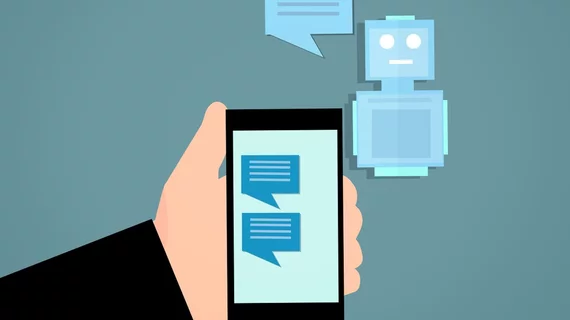6 ways radiologists can use ChatGPT
From passing medical school exams to publishing articles in academic journals, it’s no secret that ChatGPT is taking the medical world—and the world at large—by storm. While that’s sparked some concerns about the right balance of using AI in medicine, it’s also opened up a whole new world of opportunities for radiology practices that take pride in being on the cutting-edge of technology.
In a Feb. 28 paper for Diagnostic and Interventional Imaging, the authors—who reveal that ChatGPT itself wrote most of the paper—explore ways that radiologists can use ChatGPT. They largely focus on academic writing, but also note some practical ways for reading radiologists to capitalize on the AI-powered tool's abilities. [1]
Here, we highlight and expand upon possible ways that all types of radiologists can use ChatGPT: to research and write academic papers, enhance clinical decision-making, and improve patient communication and care.
ChatGPT for clinical radiologists
Implement ChatGPT as a chatbot for patient inquiries.
One of ChatGPT’s most groundbreaking abilities is its natural language processing, which allows it to skillfully handle text-based chat sessions and respond with natural-sounding language.
Practices can consider putting a chatbot on their website to be a “first line of defense” when fielding patient inquiries (which requires the right plugin, and may take some technological prowess to get it right). The paper's authors note that ChatGPT can answer questions about medical procedures and examinations (“How should I prepare for an MRI? Can I get a CT scan while I’m pregnant?), results, and follow-up recommendations. Additionally, practices can even train a chatbot to answer questions about the practice, such as opening hours, contact numbers, and fees.
If successful, staff can spend less time answering emails or phone calls and more time focusing on patient care.
Support clinical-decision making.
ChatGPT is language-based, so it can’t analyze any radiological images. However, it can serve as a handy assistant for radiologists who know how to use take advantage of its knowledge base.
The Diagnostic and Interventional Imaging paper explains that ChatGPT can share information on analysis methodologies, techniques, and relevant papers, which can help in the analysis. When provided with context and background information, the authors note, ChatGPT can even generate captions or legends for radiological images.
Radiologists shouldn't be afraid to get creative when asking for assistance. If a reading radiologist sees an uncommon abnormality on an image, for example, they can ChatGPT about possible underlying causes to make sure they're not overlooking any. Or if a radiologist wants to make sure they're following the latest clinical guidelines on a certain topic, they can ask ChatGPT to provide them with the most recent, most relevant literature. The goal is not to depend on it, but to use it as a support tool—think of ChatGPT as a highly intelligent search engine. Just be careful to fact-check its answers, as it can sometimes make mistakes.
Enhance patient communication and follow-up care.
In a paper by University of Munich researchers, ChatGPT is also explored for its abilities to simplify existing radiology reports to make them more readable for the average patient. [2] The AI can remove and replace medical jargon, helping patients gain a better understanding of their diagnosis and what it means. The authors found some inconsistencies, and warn that it's important to read and revise as necessary—but ChatGPT can still be a great head start.
Additionally, every radiologist knows that a diagnosis isn’t the end of the patient care journey. ChatGPT can help draft tailored recommendations for follow-up care based on input about a patient’s individual circumstances, can craft email text to send to patients, and more—once again, however, it's important for radiologists to read through and correct the information for any errors or inaccuracies before anything gets passed to a patient.
ChatGPT for academic radiologists
Suggest impactful and engaging titles for research articles
Simply by giving ChatGPT information about the research topic, research question, and the main findings, the authors of the Diagnostic and Interventional Imaging paper note, ChatGPT can generate a long list of suggested titles for academic papers. That can help academic radiologists save time and focus on gathering and analyzing data.
Assist with structure, format, and drafting of a research paper
While ChatGPT shouldn't be relied upon to actually write the contents of an academic paper in its entirety, the authors note that it can be quite helpful in offering suggestions for how to structure the paper and what elements to include in each section, perhaps even offering "starter" language for the introduction section when prompted with enough information about the research question. For authors who are writing in a second language, ChatGPT may also be helpful by providing assistance with translation as well as editing a draft for grammar and clarity.
Formatting the bibliography of a research paper
While it's up to the academic radiologist to make sure that a paper is accurately and appropriately sourced, ChatGPT can step in when it comes to formatting citations for the bibliography section. Radiologists can provide ChatGPT with the source they used and ask for it to be formatted in a number of different writing styles (APA, MLA, Chicago, etc.).
Paving the way for a more intelligent future
"The best use of ChatGPT in radiology will vary depending on the specific needs and goals of the organization and individual radiologists," the Diagnostic and Interventional Imaging paper notes.
Once radiologists start looking at ChatGPT as a true partner with access to an enormous amount of information, they'll start seeing new ways to use it everywhere you turn—and hopefully, both papers and practices will be better for it.
